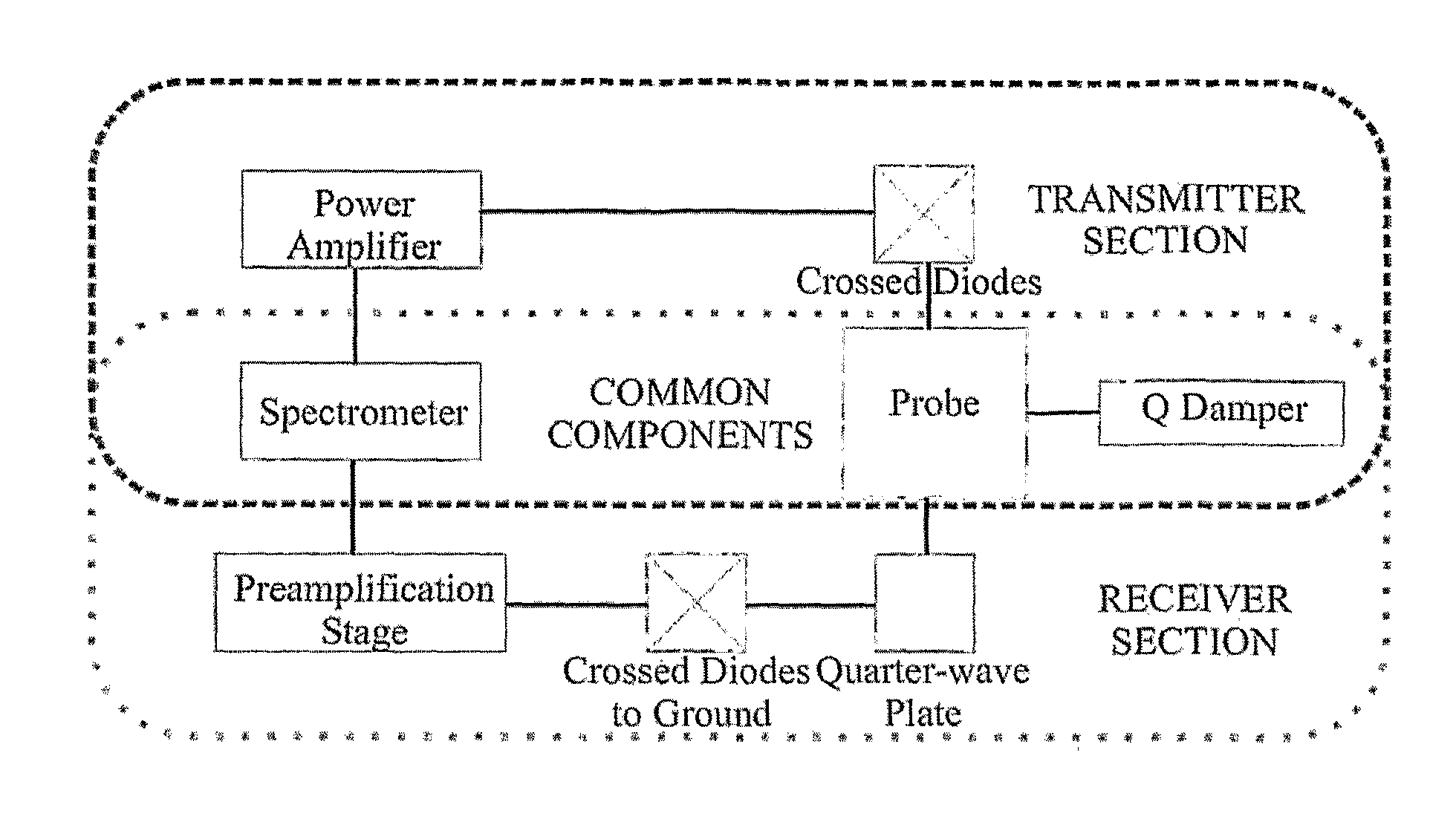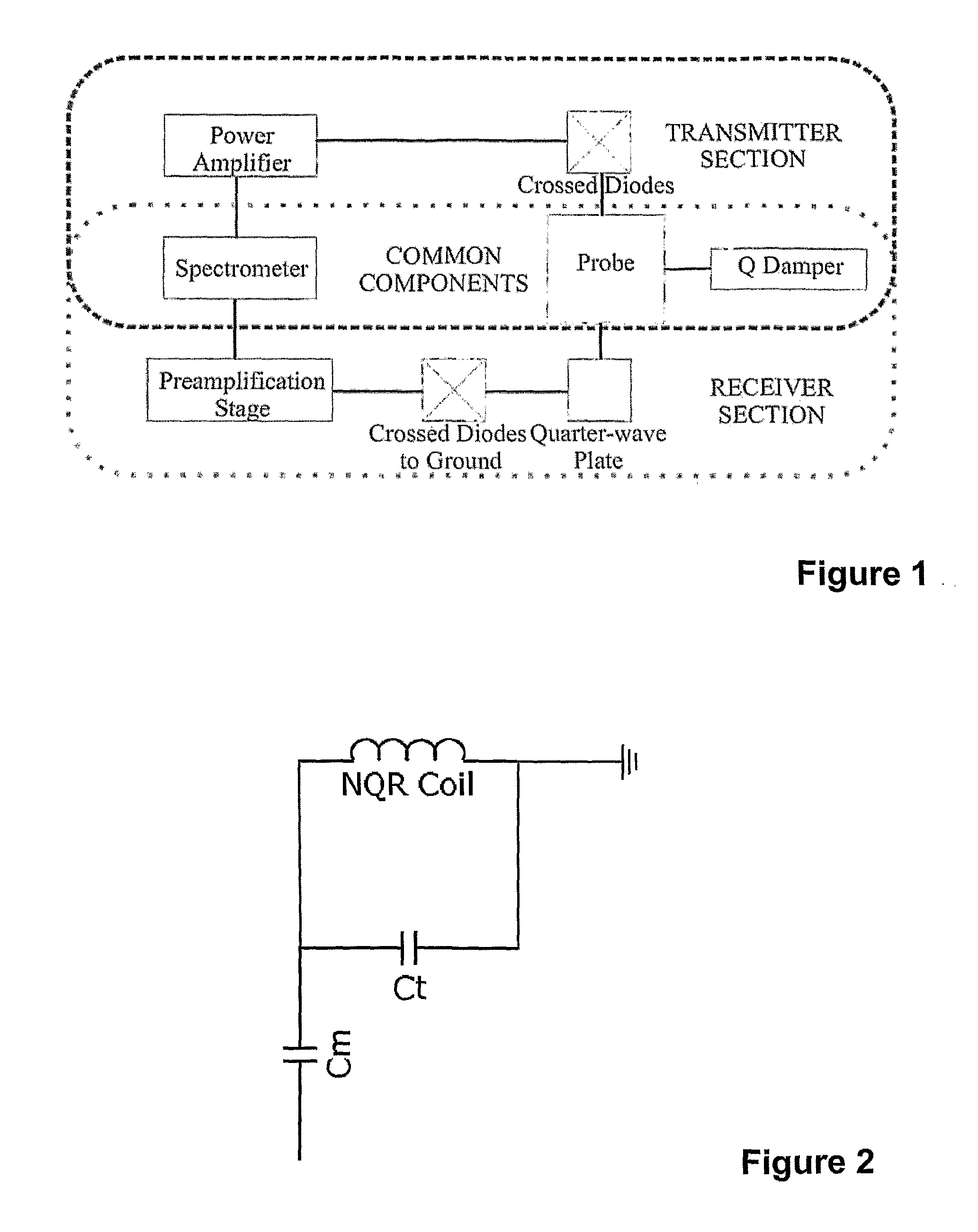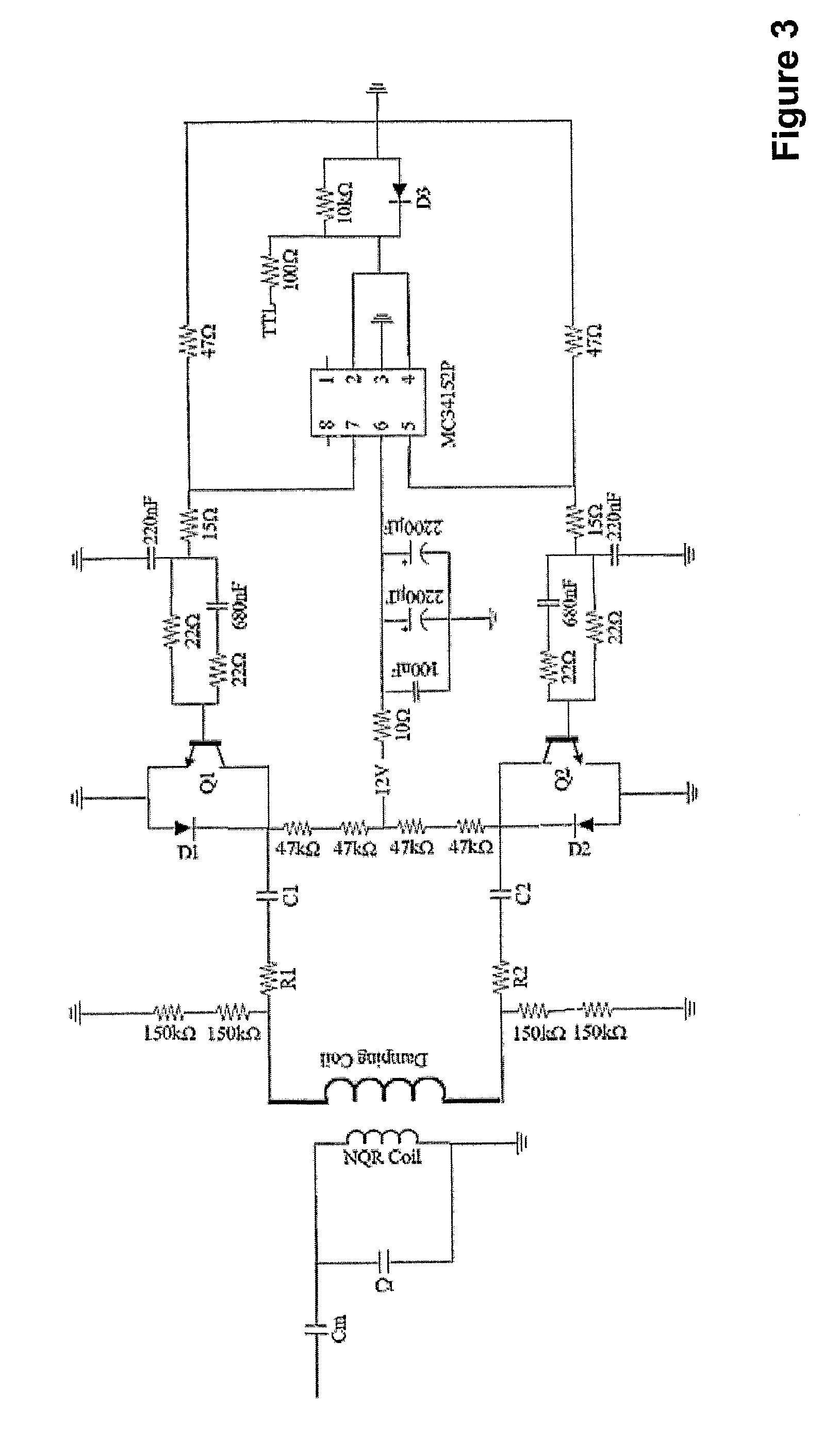Enhancing signals
- Summary
- Abstract
- Description
- Claims
- Application Information
AI Technical Summary
Benefits of technology
Problems solved by technology
Method used
Image
Examples
second embodiment
Countering Radio Frequency Interference in Single Sensor Quadrupole Resonance
[0124]This embodiment describes how, in conventional spectroscopic methods, where the SOI is measured in the time domain, late SOI-free time-domain samples can be used to reduce the influence of corruptive signals.
[0125]Two examples of exploiting signal of interest free samples in conventional NQR are described. One example closely follows the algorithmic concept in SEAQUER and is therefore denoted c-SEAQUER. The second example closely follows RCDAML and is denoted RTDAML.
[0126]Note that c-SEAQUER and RTDAML are examples of two ways of exploiting the SOI-free samples to reduce the influence of corrupting signals. Persons skilled in the art will appreciate that variants of the present invention may make use of other suitable algorithms.
[0127]Nuclear Quadrupole Resonance (NQR) is a solid-state radio frequency (RF) spectroscopic technique, allowing the detection of many high explosives and narcotics. Unfortuna...
third embodiment
[0150]In another embodiment, a representation of the corrupting signals, as modelled from noise characteristics determined from the SOI-free sample, can be simply subtracted in the frequency domain from the response signal.
PUM
 Login to View More
Login to View More Abstract
Description
Claims
Application Information
 Login to View More
Login to View More - R&D
- Intellectual Property
- Life Sciences
- Materials
- Tech Scout
- Unparalleled Data Quality
- Higher Quality Content
- 60% Fewer Hallucinations
Browse by: Latest US Patents, China's latest patents, Technical Efficacy Thesaurus, Application Domain, Technology Topic, Popular Technical Reports.
© 2025 PatSnap. All rights reserved.Legal|Privacy policy|Modern Slavery Act Transparency Statement|Sitemap|About US| Contact US: help@patsnap.com



